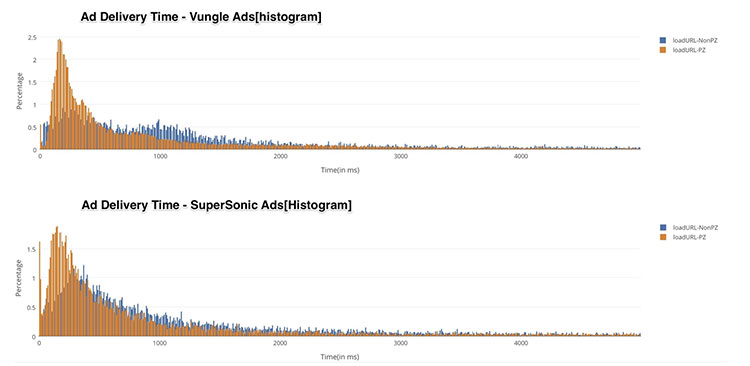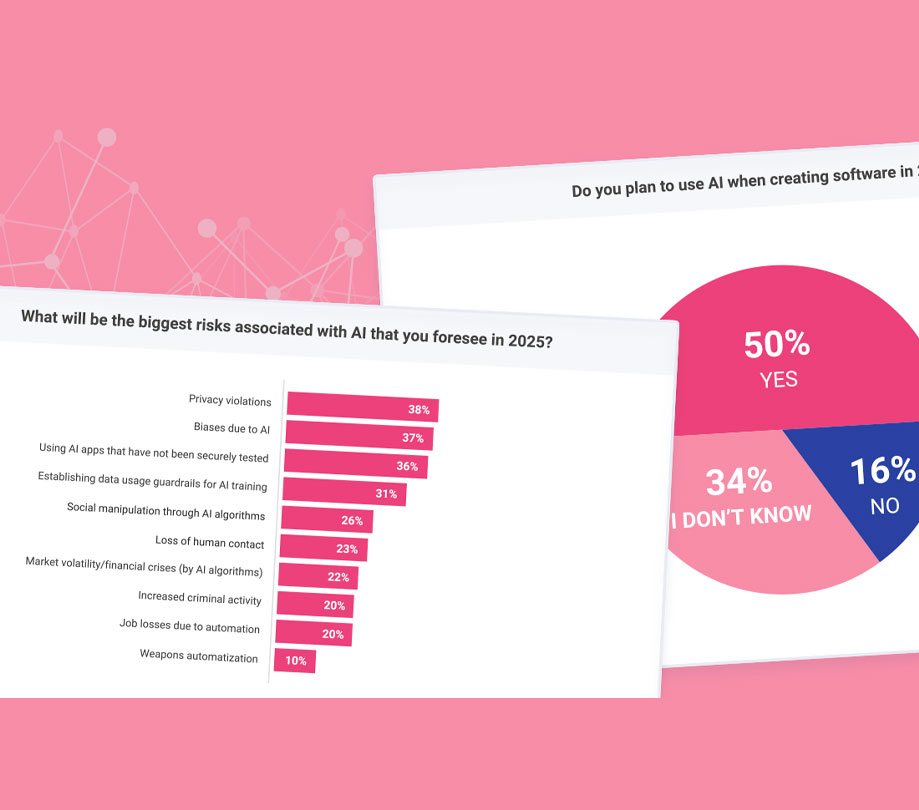Enterprise
How mobile video load time affects ad delivery
Monday, June 19, 2017

|
Patrick Kennard |

Mobile ad delivery speed can affect how much revenue you make from mobile video ads.
Ask any mobile app developer, and they’ll tell you that one of the greatest challenges in monetizing their apps through video ads isn’t finding the right demand or knowing when to run the videos; it’s figuring out how to present video ads without slowing down their apps.
I’m sure every developer at some point has done a Google search for something like, “Which ad networks are optimized for mobile apps?” or “Which mobile ad network is the fastest?”
If the primary revenue you get from your app is ad generated, speed is hardly inconsequential.
I had a conversation with a customer who explained their ad situation to me like this: After a user completes a level, the user either goes into their store and browses around for a few minutes or goes to the next level within a few seconds. The developer’s goal is to show a video ad right before the next level starts, but they’ve found themselves in a pickle. Most developers will cache their videos a few minutes before showing them, and the expiration is around 15 minutes. If the developer starts the video download as soon as the user finishes the current level, and that user then browses the store for a few minutes, the ad could expire before it can be shown, i.e., right before the next level.
On the flipside, if the developer starts the video download shortly after the user finishes the current level, and that user skips the store to go immediately to the next level, then the video has not downloaded yet and cannot be shown to the user before the next level. In this case, it would be ideal for the video to be delivered consistently within a set amount of time. But since ad retrieving timeout is around 300-400 milliseconds, even when you cache the video, slow ad retrieval leads directly to missing revenue.
Net net, while video pre-caching is a valid technique, it comes with a cost, and often times expired content would still result in real-time video downloads that usually are not fast enough.
Connection drops are another issue that affect video ads. Disconnects happen all the time, especially when users are on the move, such as when they’re commuting or walking around a busy city and their connections must transfer to a different network type. If a disconnect happens during an API call to an ad network or while downloading a large video asset, then that ad will fail to load. When disconnects happen, the end user typically doesn’t realize that the fault lies with the networks. Instead, they usually assign blame to the developer and the app itself. Many users will get so frustrated with a dropped connection that they won’t even put in the brief time it takes to reload an app.
Some networks are faster and more reliable than others. Verizon and T-Mobile top the US for speed, and lag slightly behind AT&T in disconnects. The problem of disconnects is particularly acute in developing countries that don’t have reliable cellular and WiFi networks. But it can infest developed countries as well. According to our benchmarks from February of this year, apps users in Russia, Indonesia, Germany and Brazil all suffer from more than 10% disconnects on average, with disconnect rates as high as 30 percent on 2G networks.
The charts below show ads within a popular news app. The top chart shows video ads delivered by SuperSonic and the bottom chart shows those delivered by Vungle. The x axis shows the amount of time a video took to download in milliseconds; the y axis shows the percentage of the total transfers that finished within that bucket of milliseconds. What we can see overall is that ads aren’t delivered within a consistent amount of time; they’re usually delivered anywhere from half a second to two seconds.

What this says is that if you use a mediation ad network, you should expect your ads to load anywhere from less than one second up to four seconds or longer. That doesn’t help you to engineer your app if it has time constraints like the example above. So what do you do? Well, if you choose to just use one ad network, you should be able to engineer your app/game to that specific ad network based on how long that specific network loads ads. Or, you could continue to use an ad mediator with the understanding that some percent of your users will not see the ad due to it loading too fast or too slow.
Bottom line is, attention shifts when ads takes longer to load, and time is money.
Read more: http://appdevelopermagazine.com/partner/link/?ref=
This content is made possible by a guest author, or sponsor; it is not written by and does not necessarily reflect the views of App Developer Magazine's editorial staff.
I’m sure every developer at some point has done a Google search for something like, “Which ad networks are optimized for mobile apps?” or “Which mobile ad network is the fastest?”
If the primary revenue you get from your app is ad generated, speed is hardly inconsequential.
The Developer Challenge
I had a conversation with a customer who explained their ad situation to me like this: After a user completes a level, the user either goes into their store and browses around for a few minutes or goes to the next level within a few seconds. The developer’s goal is to show a video ad right before the next level starts, but they’ve found themselves in a pickle. Most developers will cache their videos a few minutes before showing them, and the expiration is around 15 minutes. If the developer starts the video download as soon as the user finishes the current level, and that user then browses the store for a few minutes, the ad could expire before it can be shown, i.e., right before the next level.
On the flipside, if the developer starts the video download shortly after the user finishes the current level, and that user skips the store to go immediately to the next level, then the video has not downloaded yet and cannot be shown to the user before the next level. In this case, it would be ideal for the video to be delivered consistently within a set amount of time. But since ad retrieving timeout is around 300-400 milliseconds, even when you cache the video, slow ad retrieval leads directly to missing revenue.
Net net, while video pre-caching is a valid technique, it comes with a cost, and often times expired content would still result in real-time video downloads that usually are not fast enough.
Compounding the Challenge: Painful Disconnects
Connection drops are another issue that affect video ads. Disconnects happen all the time, especially when users are on the move, such as when they’re commuting or walking around a busy city and their connections must transfer to a different network type. If a disconnect happens during an API call to an ad network or while downloading a large video asset, then that ad will fail to load. When disconnects happen, the end user typically doesn’t realize that the fault lies with the networks. Instead, they usually assign blame to the developer and the app itself. Many users will get so frustrated with a dropped connection that they won’t even put in the brief time it takes to reload an app.
Some networks are faster and more reliable than others. Verizon and T-Mobile top the US for speed, and lag slightly behind AT&T in disconnects. The problem of disconnects is particularly acute in developing countries that don’t have reliable cellular and WiFi networks. But it can infest developed countries as well. According to our benchmarks from February of this year, apps users in Russia, Indonesia, Germany and Brazil all suffer from more than 10% disconnects on average, with disconnect rates as high as 30 percent on 2G networks.
Examples of Various Ad Download Times
The charts below show ads within a popular news app. The top chart shows video ads delivered by SuperSonic and the bottom chart shows those delivered by Vungle. The x axis shows the amount of time a video took to download in milliseconds; the y axis shows the percentage of the total transfers that finished within that bucket of milliseconds. What we can see overall is that ads aren’t delivered within a consistent amount of time; they’re usually delivered anywhere from half a second to two seconds.

What this says is that if you use a mediation ad network, you should expect your ads to load anywhere from less than one second up to four seconds or longer. That doesn’t help you to engineer your app if it has time constraints like the example above. So what do you do? Well, if you choose to just use one ad network, you should be able to engineer your app/game to that specific ad network based on how long that specific network loads ads. Or, you could continue to use an ad mediator with the understanding that some percent of your users will not see the ad due to it loading too fast or too slow.
Bottom line is, attention shifts when ads takes longer to load, and time is money.
Read more: http://appdevelopermagazine.com/partner/link/?ref=
This content is made possible by a guest author, or sponsor; it is not written by and does not necessarily reflect the views of App Developer Magazine's editorial staff.

Become a subscriber of App Developer Magazine for just $5.99 a month and take advantage of all these perks.
MEMBERS GET ACCESS TO
- - Exclusive content from leaders in the industry
- - Q&A articles from industry leaders
- - Tips and tricks from the most successful developers weekly
- - Monthly issues, including all 90+ back-issues since 2012
- - Event discounts and early-bird signups
- - Gain insight from top achievers in the app store
- - Learn what tools to use, what SDK's to use, and more
Subscribe here












Comments